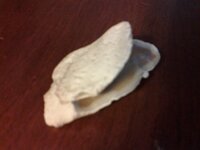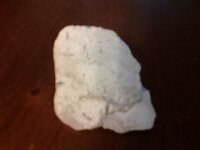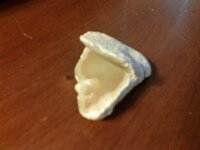yakker
Bronze Member
- Jan 20, 2012
- 1,663
- 1,240
- Detector(s) used
- spec enhanced eyeballs
- Primary Interest:
- All Treasure Hunting
never mind. my pics won't load. Or I guess some did. I'm so confused. Question was... how does this happen- natural, man-made or heat? My 'laughing rock'
Attachments
Last edited:
Upvote
0






 Almost like a clam.
Almost like a clam. ) which I will keep in mind as I wander around looking for watery treasure. So thanks for taking the time to explain- or propose- all that. Sorry about the quality (or lack thereof) of the pics. And the lack of scale. It's not chalky, but a crust, as an aged piece of chert would develop over a loooooong time. The inside is slick like a wacked, fine grained stone. It's about 2.5 inches at the widest.
) which I will keep in mind as I wander around looking for watery treasure. So thanks for taking the time to explain- or propose- all that. Sorry about the quality (or lack thereof) of the pics. And the lack of scale. It's not chalky, but a crust, as an aged piece of chert would develop over a loooooong time. The inside is slick like a wacked, fine grained stone. It's about 2.5 inches at the widest.